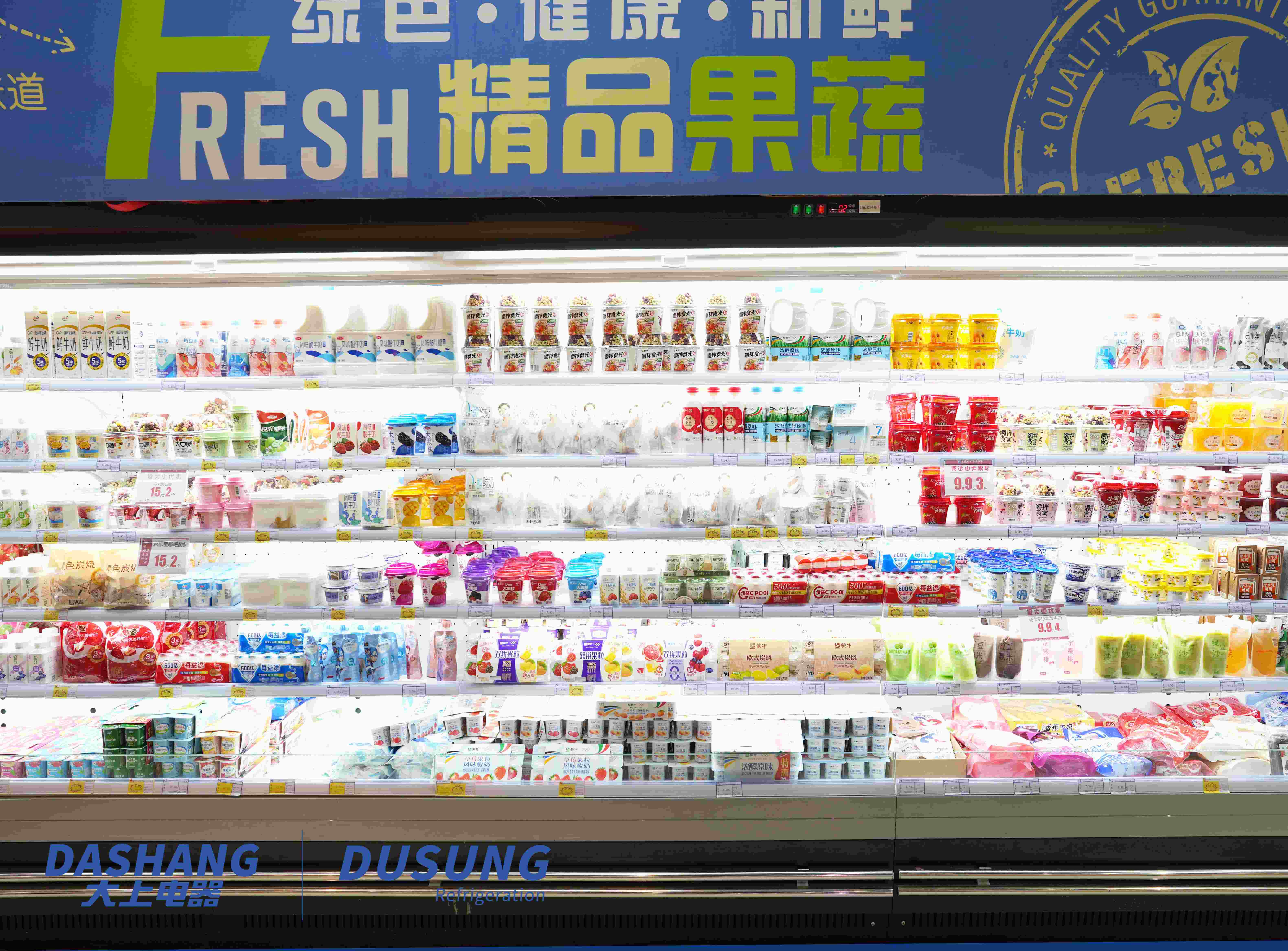As the demand for fresh, ready-to-eat, and convenience foods continues to rise, the open chiller has become one of the most essential refrigeration systems for supermarkets, grocery chains, food service businesses, beverage stores, and cold-chain distributors. Its open-front design allows customers to easily access products, improving sales conversion while maintaining efficient cooling performance. For B2B buyers, choosing the right open chiller is critical to ensuring stable refrigeration, energy efficiency, and long-term operational reliability.
Why Open Chillers Are Essential for Commercial Refrigeration?
Open chillers provide constant low-temperature environments for perishable food, helping retailers maintain product freshness and safety. Their open display structure encourages customer interaction, increases impulse purchases, and supports high traffic retail environments. As food safety regulations tighten and energy costs rise, open chillers have become a strategic investment for businesses aiming to balance performance with efficiency.
Key Features of an Open Chiller
Modern open chillers are engineered for high performance, low energy consumption, and easy product visibility. They offer a range of features designed to fit different retail formats and operating requirements.
Main Functional Advantages
-
Open-front design for convenient product access and improved display visibility
-
High-efficiency airflow cooling to maintain stable temperatures across shelves
-
Adjustable shelves for flexible product arrangement
-
Energy-saving night curtains for improved efficiency during non-business hours
-
LED lighting for clear product presentation and reduced power usage
-
Strong structural insulation to minimize temperature loss
-
Optional remote or plug-in compressor systems
These features enhance retail merchandising while ensuring food safety compliance.
Applications Across Retail and Food Distribution
Open chillers are used extensively in commercial environments where both freshness and display appeal are critical.
-
Supermarkets and hypermarkets
-
Convenience stores
-
Beverage and dairy product shops
-
Fresh meat, seafood, and produce areas
-
Bakeries and dessert shops
-
Ready-to-eat and deli sections
-
Cold-chain distribution and retail display
Their versatility makes them suitable for a wide range of packaged, fresh, and temperature-sensitive products.
Advantages for B2B Buyers and Retail Operations
Open chillers provide significant value for retailers and food distributors. They increase product visibility, stimulate sales, and support efficient store layout planning. From an operational perspective, open chillers help maintain consistent cooling performance even under high customer traffic. Modern units also offer lower energy consumption, quieter operation, and improved temperature stability compared to earlier models. For businesses looking to upgrade their commercial refrigeration systems, open chillers offer a reliable combination of performance, convenience, and cost-effectiveness.
Conclusion
The open chiller is an essential refrigeration solution for modern retail and food service businesses. With its open-access design, energy-efficient cooling, and strong display capabilities, it enhances both operational performance and customer experience. For B2B buyers seeking durable, efficient, and visually appealing commercial refrigeration equipment, open chillers remain one of the most valuable investments for long-term growth and profitability.
FAQ
1. What products can be stored in an open chiller?
Dairy products, beverages, fruits, vegetables, meat, seafood, and ready-to-eat foods.
2. Are open chillers energy-efficient?
Yes, modern open chillers feature optimized airflow systems, LED lighting, and optional night curtains to reduce energy consumption.
3. What is the difference between open chillers and glass door refrigerators?
Open chillers allow direct access without doors, ideal for fast-moving retail environments, while glass-door units offer better temperature insulation.
4. Can open chillers be customized?
Yes. Length, temperature range, shelf configuration, lighting, and compressor types can all be customized based on business needs.
Post time: Nov-17-2025





